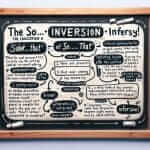“Such was the popularity of the street food festival that it was extended for another week.” Sounds familiar, right? This structure, while seemingly simple, can significantly enhance your IELTS writing, lending it a sophisticated and formal tone. Let’s explore how to effectively utilize this construction across different sections of the IELTS exam.
Imagine you’re describing a graph showing a surge in online shopping. You could write, “Such was the increase in online shopping that traditional retail stores experienced a sharp decline.” Or, in the essay discussing the impact of social media, you might say, “Such is the pervasiveness of social media that it has fundamentally altered human interaction.“
Notice how these sentences emphasize the degree of impact using the “such…that” structure, making your writing more impactful. Now, let’s delve deeper into its mechanics.
Understanding the “Such…That” Construction
This structure is essentially a way of expressing cause and effect, highlighting the intensity of something leading to a significant consequence.
Meaning and Usage
“Such” is a determiner used here to emphasize the degree or intensity of something. “That” acts as a conjunction, connecting the cause and the result.
Frequency in IELTS
While not overly common, this structure appears across various sections of the IELTS, particularly in Writing Task 1 when describing trends or in Task 2 when illustrating a point with an example.
Mastering the Formula
Let’s break down the formula for using this construction effectively:
Such + be verb (was, were, is, are) + noun phrase + that + result clause
Example:
Such was the demand for electric cars that manufacturers struggled to keep up.
In this example:
- “Such” emphasizes the high demand.
- “Was” is the verb “be” agreeing with the noun “demand.”
- “Demand for electric cars” is the noun phrase describing what was intense.
- “That” introduces the result clause.
- “Manufacturers struggled to keep up” describes the consequence of the high demand.
Applying “Such…That” in IELTS
Writing Task 1
Scenario: You are given a line graph showing a sharp increase in the number of tourists visiting a particular city.
Sentence: “Such was the growth in tourism that the city had to invest heavily in infrastructure.“
This sentence effectively conveys the significant impact of the tourism boom on the city.
Writing Task 2
Topic: Discuss the influence of technology on education.
Sentence: “Such is the transformative power of technology that classrooms are no longer confined to four walls; learning can happen anywhere, anytime.“
This sentence uses the “such…that” structure to emphasize the profound impact of technology on the traditional model of education.
 The transformative power of technology in education
The transformative power of technology in education
Advanced Usage for a Higher Band Score
To further enhance your writing and potentially achieve a higher band score, consider these tips:
- Vary sentence structure: Instead of always starting with “Such…”, try inverting the sentence for greater impact. For example, “The impact of social media on mental health is such that it has become a major concern for researchers.”
- Use synonyms: Instead of constantly using “popularity,” explore words like “fame,” “renown,” or “demand” depending on the context.
Common Errors and How to Avoid Them
- Subject-verb agreement: Ensure the verb “be” agrees with the noun in the phrase following “such.”
- Incorrect: Such were the popularity of the concert that tickets sold out.
- Correct: Such was the popularity of the concert that tickets sold out.
- Overuse: While effective, avoid overusing this structure. Employ it strategically to highlight specific points.
Conclusion
The “such…that” construction, while simple in appearance, holds significant power to elevate your IELTS writing. By understanding its construction, practicing its application, and being mindful of potential errors, you can utilize this tool to express cause and effect with greater emphasis and sophistication, ultimately contributing to a higher band score. Remember, consistent practice and a keen eye for detail are key to mastering any language skill.


